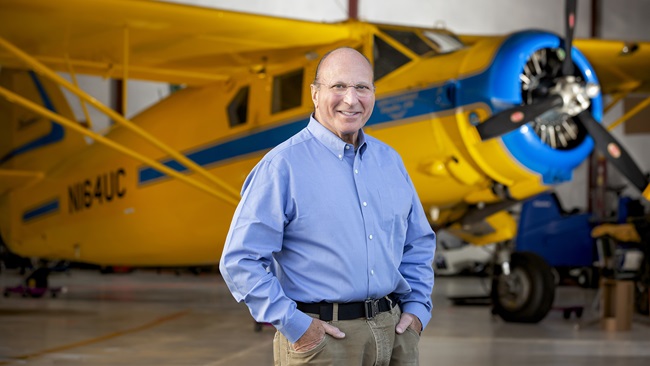Fly Well: Changing face of aeromedicine
75 years of aviation medical certification
 Dr. Warren Silberman managed the FAA medical certification division from 1997 through 2011. During his tenure, one million medical records were stored in an Oklahoma City basement—to move them to a higher floor risked collapse. During building renovations, however, a sewer line broke, flooding the basement so reviewing charts required one to be ankle deep in you-know-what. What is the relevance of this? That a pilot plus the FAA medical certification process equals a foul mood and a foul smell! Other contributors to this magazine have compared modern aircraft to those from 1939, when AOPA was conceived. From Cub or Staggerwing to modern business jet, or ball and compass to GPS moving map, let’s look at how medicine and our freedom to fly have changed.
Dr. Warren Silberman managed the FAA medical certification division from 1997 through 2011. During his tenure, one million medical records were stored in an Oklahoma City basement—to move them to a higher floor risked collapse. During building renovations, however, a sewer line broke, flooding the basement so reviewing charts required one to be ankle deep in you-know-what. What is the relevance of this? That a pilot plus the FAA medical certification process equals a foul mood and a foul smell! Other contributors to this magazine have compared modern aircraft to those from 1939, when AOPA was conceived. From Cub or Staggerwing to modern business jet, or ball and compass to GPS moving map, let’s look at how medicine and our freedom to fly have changed.
Aviation safety has improved dramatically since 1939, when a world war threatened. Life expectancy for that birth year was age 62.81 for men and 67.29 years for women, compared to 76.3 and 81.1 years today. When President Calvin Coolidge signed the Air Commerce Act on May 20, 1926, “physical standards” applied to three categories: private pilot, industrial pilot, and transport pilot. The goal? To ensure that pilots were fit to fly to protect themselves and their passengers. Initially a military program, civilian aviation medical exams began on February 28, 1927, with 57 examiners.
The FAA expanded medical certification rules and growing medical knowledge inspired greater federal focus. What has changed in 75 years? Back then, Alzheimer’s, AIDS, and Ebola were unheard of and X-ray diagnosis was novel. Now we have CAT scans, PET scans, and MRIs. Nowadays we can run a complete picture of the human genome, an unknown term in 1939. And therapies? Open heart surgery, organ transplantation, chemotherapy, dialysis, and hip replacements—all unknown when AOPA got its start.
How does the FAA cope with an aging population and expanding medical knowledge? In 2011, just 120 people worked in the FAA medical certification division in Oklahoma City, analyzing 400,069 applications—with eight physicians reviewing cases. In 2011, 594,314 airmen were certified (123,444 first, 89,704 second, and 381,166 third class medicals), 39,461 airmen had special issuances, and 2,463 were denied.
FDA-approved medications can take years to gain FAA endorsement—the agency wants to see whether unexpected side effects arise that could endanger flight. However, commitment and endurance drives change; AOPA spoke up and in 1996 insulin-dependent diabetics could obtain third class special issuance. In July 2008 time intervals for first class medicals moved from six to 12 months and third class from 36 to 60 months. Lobbying by AOPA and other groups allowed pilots taking four SSRI medications to fly again in April 2010.
Waiving medical certification requirements for recreational and student pilots has led to the Light Sport category driver’s license medical. Recent moves to eradicate third class medicals have the FAA announcing a rulemaking process. What are the pros and cons? I just had my third class AME visit with the same doctor I have seen for nearly 20 years and he is fiercely opposed to any such change. Others feel it is an enormous waste of time and money. If one has a disqualifying condition, it should be apparent to the pilot. All the current process shows is that you are fit to fly for the 30 minutes you are in the doctor’s office. I would love to see pilots become much better educated about aeromedical matters and properly self-certify before every flight. Some pilots knowingly falsify records and fly with conditions, or fly while taking medication that should ground them. Obviously unacceptable, but current certification will not detect such deceit. Attention should focus on changing ineffective, costly practices and helping support rational and timely implementation of new medical policies.
One thing is for sure, the next 75 years will have as many amazing developments in healthcare and aviation as the prior 75—and AOPA will be there as our advocate.
Dr. Jonathan sackier is a British-trained medical professional and private pilot who now lives in Virginia.
Email [email protected]



